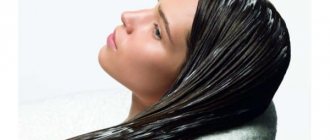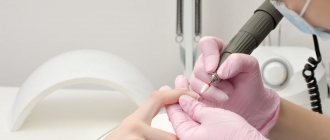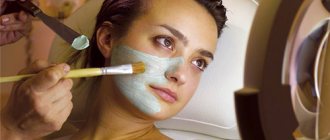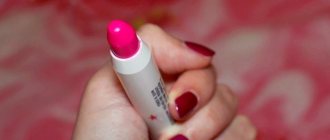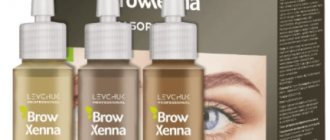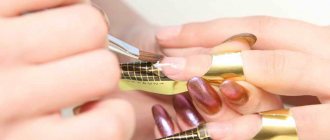Depilation at home
It would seem that it’s difficult to use an electric epilator: plug it into a socket and run it over the skin, removing unnecessary hairs. However, there are some points that you need to know about, and then the term “depilation” will not evoke terrible associations, and the effectiveness of the procedure will be maximum.
Skin preparation
Before you start treating your skin with an epilator, you need to prepare it for the process. First, it is recommended to cleanse the skin of impurities and steam it in a hot bath to open the pores. This will make it much easier to pull the hairs out of the skin along with the follicle.
Consequently, the pain at the time of depilation will not be so severe, and due to the fact that the hairs are removed along with the root, in the future there will be fewer of them, and they will grow thin, weak and almost unnoticeable.
While taking a bath, the skin can be treated with a scrub. This will remove the stratum corneum and thus make it easier to remove hair from the skin.
After treatment with a scrub, the stratum corneum becomes thinner, which makes hair removal easier
After steaming and scrubbing, it is recommended to disinfect the skin surface so that during depilation, pathological microflora does not get under the skin, which contributes to the occurrence of inflammatory processes.
Hair length
One of the determining factors in the pain of the procedure is the length of the hairs . If the hairs are too short, the epilator tweezers will not be able to capture the entire hair shaft, but only its tip. As a result, the hair will be pulled painfully, but will not be pulled out or will break. Consequently, pain will appear, but the result will not be achieved.
Long hairs seem to be removed quite effectively, but the process of removing them will be associated with particularly painful sensations.
The optimal hair length before depilation should be 5 mm.
Depilation direction
In the process of pulling out hairs, the direction in which the epilator moves is important. To minimize pain and increase the effectiveness of depilation, the procedure should be performed against hair growth .
If you do the opposite, then mechanical tweezers will not be able to capture all the hairs as the epilator passes over the skin. Therefore, you will have to treat the same area of skin several times, and this is accompanied not only by pain, but also fraught with irritation. You also need to understand that if the hairs are poorly captured, they often do not pull out, but break off .
In the bikini area and armpits, the movement of the epilator should be circular. In addition, the epilator should not be constantly held above the surface of the skin, but should be applied pointwise to the treated area. Such manipulations will significantly reduce pain and reduce irritation.
When depilating any area, the epilator should be held at an angle of 90° to the surface of the skin.
Speed mode selection
All epilators offer at least two tweezer speeds. Low speeds should be used for thinner and more sensitive skin (bikini area, armpits, upper lip, ankles, inner bend of the knee). High speed mode is used on denser skin and a flat surface of the body (arms, legs).
Skin tension
Depilation will be less painful if you slightly stretch the treated area of skin during the procedure . This point is especially relevant for the bikini area, armpits and upper lip. It is in these places that the skin has no tension, and when hairs are pulled out, the skin is pulled behind them, as a result of which the follicle is either not removed at all and is injured, or when it is removed, sharp pain occurs.
Video: using an epilator at home
How to reduce pain
No matter what tricks are used during the depilation procedure to reduce pain syndromes, severe pain is still experienced in some areas. We are talking about the bikini area and armpits. In addition, some women have too low a pain threshold, and they are forced to endure unbearable pain.
First of all, you initially need to choose epilators that come with special attachments that soften the effect of the device. However, it is fair to note that all these additional devices do not always cope with their task.
The epilator should come with attachments that soften the effect of the device.
In such cases, experts recommend the use of painkillers.
Often before depilation, women apply Emla cream to the treated skin. It contains two anesthetics: lidocaine and prilocaine.
The drug is applied to the skin in a thick layer so that the skin is not visible. An occlusive sticker is applied on top or, if it is missing, a cling film is applied. Application time should be 1 hour for the bikini area and armpits and 30–40 minutes. for the skin of the hands or feet, after which the sticker is removed, and the remaining product is removed with a dry cloth.
The effect of anesthesia after removal of the application lasts 2 hours. This time is enough to treat all problem areas with the epilator.
You can also use other formulations for skin anesthesia: Lidocaine spray, Acriol Pro cream, Light Dep. Before using each painkiller, you must carefully study the instructions and become familiar with the contraindications for use.
Photo gallery: anesthetics
Emla is the most popular pain reliever for depilation.
The anesthetic effect occurs within 30–40 seconds, but lasts only 15 minutes
After applying Light Dep cream, the analgesic effect occurs within 15–60 minutes, and the duration of anesthesia is 4 hours
Acriol Pro cream, like Emla, contains lidocaine and prilocaine
This is interesting. Studies have shown that women before menstruation experience depilation much more painfully. Therefore, it is better to schedule the procedure at the beginning of the cycle. It was also revealed that in the morning the pain is much stronger than in the evening.
Treatment of the skin after depilation
During the procedure, the skin was exposed to aggressive influences, and it is not surprising that certain irritations may appear on it. Most often it is hyperemia (redness) and red dots. Redness of the skin is caused by the fact that under the irritating influence of the epilator tweezers, blood flow increases in the layers of the skin.
The red dots are due to the fact that the hair is pulled out along with the follicle, therefore, the capillaries that fed it are broken.
To eliminate irritation or simply to soothe the skin, do the following:
- cool the skin with an ice cube (you can use herbal infusions of chamomile, sage, calendula, green tea);
- lubricate the treated area with light baby oil or a soothing drug (Panthenol, Bepanten);
- to prevent inflammatory processes, it is recommended to apply an antiseptic to the skin after depilation (for example, hydrogen peroxide, Chlorhexidine);
- effectively prevents and also eliminates aloe irritation. To do this, you need to cut a small piece of the sheet and remove its top layer. Rub the irritated areas with aloe pulp;
- To remove red spots or pimples, you can use an oil balm: 1 tbsp. l. olive oil and 5 drops of tea tree essential oil. The skin must be treated 2 times a day;
- The skin can be helped by compresses with infusion of birch leaves: 1 tsp. Pour 1/2 cup of boiling water over crushed birch leaves and let it brew until it cools completely. Strain the prepared solution, moisten a natural cloth in it and apply to the problem area for 20 minutes;
- If ingrown hairs appear later, you must first remove them with a needle and tweezers, and then treat the skin with an antiseptic. In the case when an abscess has formed at the site of an ingrown hair, the purulent inflammation cannot be squeezed out, because the follicle will change its position and its hairs will constantly grow into the surface of the skin.
Video: removing ingrown hairs
Proper preparation for hair removal at home
Shaving legs with an epilator is very popular due to the following advantages:
- The device is easy to use, suitable even for beginners;
- no additional devices or cosmetics are needed;
- The machine has several attachments, so hair removal can be done on any part of the body;
- with regular use, the hairs become thinner and lighter, and their growth rate decreases;
- long-lasting results (hair does not grow for 2-3 weeks).
An epilator is a wonderful tool for removing unwanted hair. It is simple and easy to use, easy to clean and store, and with proper care it will last for many years. The device is inexpensive and can be supplied with various attachments or additional options that greatly facilitate the epilation process.
We suggest you familiarize yourself with Treatment of advanced varicose veins on the legs at home
But shaving hair with an epilator has some disadvantages:
- painful procedure, especially on sensitive areas of the body;
- formation of ingrown hairs;
- risk of skin irritation, damage to blood vessels;
- duration of the procedure.
The downside of some models can also be the loud operation of the device. Before getting rid of hair using an electrical appliance, it is recommended to weigh the pros and cons, and also consult with a specialist.
Before depilation, you should use a moisturizing body cream daily (at least 3-4 days); 1-2 days before the session, you need to apply a scrub to remove the upper keratinized layer of the epidermis.
It is recommended not to sunbathe for one week before the procedure, as the sun (or solarium) will dry out the skin. Removing hair from dry skin can lead to irritation and sores.
When using an epilator for the first time, it is necessary to properly prepare the skin: taking a hot shower or bath will perfectly open the pores, and depilation will be less painful, the roots will hold on weaker.
If you're wondering how to use an epilator for the first time, prepare your skin by taking a warm bath or shower, which will help open up the pores.
In addition, dry and hard rods can break off. It is important to remember that before using the epilator for the first time, you should read the instructions for use. Many models are designed to remove excess vegetation from a completely dry surface.
Before epilating the bikini area or armpits, it is recommended to cover sensitive areas with talcum powder or baby powder. This will degrease the treatment area, compact the rod, and as a result, the adhesion of the device head and hairs will be reliable, which will allow the procedure to be carried out quickly and effectively.
The armpits and bikini area are very delicate areas of the body that are susceptible to pain, so you should gently stretch the skin, which will greatly facilitate and speed up the process.
When treating the intimate area, you can use a freezing spray or ointment containing lidocaine. Emla cream is perfect (even pregnant women can use it). You can use a cooling mitt.
Some people take painkillers 30 minutes before hair removal, but this is only justified for women with a very low pain threshold.
Before depilation, you should do a short massage of your legs: light patting movements will relax the epidermis and the process will be less painful. The most sensitive areas on the legs are on the ankles and under the knees, so it is better to start with other areas so that the skin gets a little “accustomed” to the sensations.
Thanks to the smooth surface, depilation of legs will not take much time (however, when using the epilator for the first time, it will take at least 30-40 minutes).
How to prevent ingrown hairs
When it comes to depilation, cosmetologists try their best to avoid further ingrown hairs. To understand what measures need to be taken to reduce the risk of ingrown hairs, you need to clearly understand the mechanism of their occurrence.
During depilation, the hair is captured by the tweezers of the epilator and pulled out of the skin along with the follicle. When, for certain reasons, the hair could not be eliminated and it broke off, its hair follicle was damaged and was displaced in its position.
As a result, the hair growing from it changes the direction of growth and often grows under the skin. In some cases, purulent inflammation appears at the site of the ingrown hair.
Hairs after depilation can grow into the skin for various reasons.
Another factor contributing to the appearance of ingrown hair is the dense keratinized layer of skin. After several depilations, the newly growing hairs have a thin and weak shaft that is not able to “pierce” the dense skin and therefore grows into it.
To minimize the likelihood of ingrown hairs, you must adhere to the following recommendations:
- Before depilation, steam the skin and treat it with a scrub so that the hair is effectively pulled out and not broken off;
- carry out the procedure with a hair length of at least 5 mm;
- eliminate hairs against their growth;
- stretch the skin during the procedure;
- Treat the skin with scarabs twice a week; this will help remove dead cells and make the surface of the skin more delicate. Then a thin and weak new hair will be able to break through. Ground coffee, salt crystals, and bran can be used as solid particles. To prepare the scrub you need to take 1 tbsp. l. shower gel and 1 tbsp. l. abrasive grains;
- 24 hours after depilation, apply a special lotion against ingrown hairs to the skin. It is recommended to use the product 2 times a week.
Photo gallery: lotions that prevent ingrown hairs
The lotion will prevent redness and scratches that can be caused by depilation, and will help you achieve perfectly smooth and healthy skin.
The lotion contains salicylic, lactic and malic acids, which help dissolve the upper stratum corneum of the skin and a complex of substances that soften the skin and facilitate the germination of light and fine hairs
The product not only copes with the problem of ingrown hairs, but effectively stops hair growth, moisturizes and softens the skin
Photos before and after
Experts advise taking proper care of your skin after hair removal:
- The skin should be lightly massaged with an ice cube, treated with a disinfectant solution containing alcohol, then lubricated with baby cream (or any cream with chamomile, calendula, aloe vera, tea tree extract).
- For the first 1-2 days (until the redness goes away), it is not recommended to visit the pool, bathhouse, or sunbathe.
- The effect lasts longer if you use products that slow down hair growth.
- Once every 2-3 days you should apply a scrub, while taking a shower or bath, use massage sponges - this will prevent hairs from growing into the skin.
- Use body moisturizer regularly.
Depending on the chosen epilator model, the user can epilate or depilate almost any area of hair on the body:
- armpit hair removal;
- deep bikini epilation;
- hair removal of arms and legs;
- shaving legs with an epilator;
- shaving armpits and bikini area.
The most difficult part will be epilation of the armpits, bikini and deep bikini areas, and the area under the knees. The principle of hair removal on all selected areas of the body is the same: the device is placed against the surface of the skin at an angle of 90°. The procedure begins with treating small areas of skin. But before you start the procedure, you need to know how to prepare your skin for hair removal.
After epilating your legs with a depilator, you need to take care of your skin and perform the following care measures:
- immediately after shaving, you need to treat the skin of your legs with an antiseptic to prevent infection;
- after 1 hour, apply a softening, nourishing cream to the skin;
- to reduce pain after the procedure, you can move an ice cube over your legs;
- if irritation occurs, you should use Bepanten or Panthenol ointment;
- for inflammation, you should use Miramistin or Levomekol.
After epilation, you should not carry out thermal procedures or swim in open water for several days. Between shaving sessions, it is recommended to use special products that slow down hair growth.
Removing unwanted hair with an epilator is a simple and effective procedure that allows you to get rid of excess hair for a long time. But regular use of an electrical appliance can cause the following negative consequences:
- damage to the epidermis accompanied by inflammation (red pimples appear);
- skin irritation, manifested by redness, burning, itching;
- ingrown hairs;
- a violation of the structure of the skin, as a result of which it becomes dry, rough, and begins to peel off.
If blood vessels are located close to the top layer of skin, then they may be damaged when shaving with an epilator.
Effect duration
Smooth skin after depilation will last for 2–4 weeks, depending on the thickness and thickness of the hair. Then new hairs will appear, but they will no longer be so noticeable because they grow thin and soft.
The epilator can be used on the same area of skin no more than once a week . Otherwise, with frequent aggressive mechanical action, the skin surface will be severely irritated, not only redness and red spots will appear on it, but also purulent pimples and even boils.
Contraindications
The list of restrictions on the use of the epilator is small. However, you need to familiarize yourself with it to avoid certain troubles.
- Pregnancy. During pregnancy, if acute painful sensations appear, the uterus can go into a state of increased tone, i.e., there is a risk of early pregnancy termination or premature birth.
- Phlebeurysm. During the procedure, there is a rush of blood to the legs. For diseased veins, excess blood flow will significantly complicate their work and generally worsen the situation.
- Excessively sensitive skin. Depilation in this case causes serious pain, which can even lead to shock. Of course, the skin can be numbed. However, do not forget that sensitive skin surfaces may also react poorly to the active components of the anesthetic. Severe irritations may appear on it, which will then take a long time to heal. In this situation, it is better to resort to other methods of hair removal.
- The presence of moles, warts and papillomas on the skin. Places with such formations cannot be treated with an epilator.
- Fresh wounds, scratches and abrasions.
